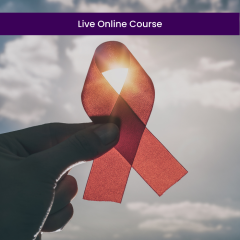Supporting Teens Bundle (14 CE)
1. Teen Dating Violence and Abuse: According to statistics, one in three teenagers have experienced violence in a dating relationship. The number of teens who experience verbal, emotional and even sexual abuse in dating relationships is even greater. Dating violence impacts all economic, racial, cultural, religious and social groups. As teenagers inherently have far less power and psychological influence in society than adults, they face an even higher risk of serious injury. Many teens misperceive abusive acts as signs of “love,” which significantly impacts their ability to ask for help. This course will discuss assessment techniques for teen dating abuse and address pertinent treatment issues for the victimized teen, including prevention skills for dating violence. Attention will also be given to the Lesbian, Bisexual, Gay and Transgender teen population as related to sociological issues that affect teen dating violence. Treatment dynamics involving parents whose teenager is in a violent relationship will also be addressed.
Author: Patricia Patton-Lehn, Ph.D.
Target Audience: Introductory and Intermediate; LMFTs, Social Workers, LPCCs, Nurses, Substance Abuse Counselors, and other mental health clinicians.
Upon completion of this course, participants will be able to:
- Identify and assess for signs of teen dating violence and other forms of abuse.
- Understand the specific sociological and treatment issues associated with dating violence in the Lesbian, Bisexual, Gay and Transgender (LBGT) teen population.
- Learn to work more effectively with issues of teen dating violence and victimization, including prevention skills for relationship abuse.
- Address parents’ concerns about teens being in a violent or abusive relationship.
- - - -
2. Substance Misuse Prevention for Young Adults: According to the 2018 National Survey on Drug Use and Health, over a third of young adults aged 18-25 engaged in binge drinking in the last month, and slightly over 38% used illicit drugs within the last year. When compared to other age groups, young adults have some of the highest levels of alcohol and substance misuse. This course uses a social-ecological perspective to illustrate the variety of developmental and contextual factors that place a young adult at risk for substance misuse. Identifying risk factors, as well as examining factors that prevent misuse, serves as the foundation for the development of evidence-based prevention practices and programs. The Substance Abuse and Mental Health Services Administration (SAMHSA)’s evidence-based prevention practices reviewed in this course targets universal, selected, and indicated populations at risk for substance misuse or substance use disorder.
Learning Objectives:
- Describe the prevalence, patterns, and trends of substance misuse among young adults.
- List the developmental and contextual factors that place young adults at risk for substance misuse.
- Identify protective factors that serve to mitigate substance misuse for young adults.
- Recognize vulnerable population groups at risk for substance misuse, as well as those at risk for developing Substance Use Disorder.
- Differentiate between evidence-based programs implemented in childhood and adolescence and those designed for young adults.
- Discuss how the steps of the Strategic Prevention Framework can be used as a guide for the implementation of evidence-based programs and practices.
- - - -
3. Key Findings on Adolescent Drug Use: Monitoring the Future (MTF) is a study that is conducted annually in the US. The primary purpose of this study is to examine middle and high-school students’ beliefs pertaining to, and their related use of, specific substances. Researchers utilize the information that is derived from this study as a means of identifying emerging substance use trends. This study is primarily conducted for governmental use as the related data analysis is utilized to shape national policy. Additionally, related intervention strategies may also be developed contingent on trend analysis.
Learning Objectives:
- Summarize the key findings of the MTF study regarding the use of various substances by 8th, 10th, and 12th graders across the United States
- Understand study findings for identification and tracking purposes pertaining to emerging substance use
- Understand the researchers’ findings respective of substance availability, attitudes, and beliefs
- Examine how differing criteria can serve as change indicators respective of the aforementioned factors
- Understand the dynamic evolution of recreational drug use
- Understand the negative consequences of drug use, and the related development of prevention strategies
- Describe important demographic subgroup variations that are existent when analyzing substance use among middle and high-school students
- Understand how study-specific findings inform and guide national policy formation
- Understand how the related data is applied for intervention strategy development and other treatment efforts
Course By: Helen Hinton, LPCC
Content By: Johnston, L. D., Miech, R. A., O’Malley, P. M., Bachman, J. G., Schulenberg, J. E., & Patrick, M. E. (2020). Monitoring the Future national survey results on drug use 1975-2019: Overview, key findings on adolescent drug use. Ann Arbor: Institute for Social Research, University of Michigan.
Approvals:
| Board Approvals | American Psychological Association (APA), Association of Social Work Boards (ASWB), NBCC, Florida Board - Social Work, MFT, Counseling, and Psychology, NYSED - Social Work, MFT and Counseling Only, American Academy of Health Care Providers in the Addictive Disorders |
|---|---|
| CE Format | Online, Text-Based |
| Asset Includes | Bundles |







